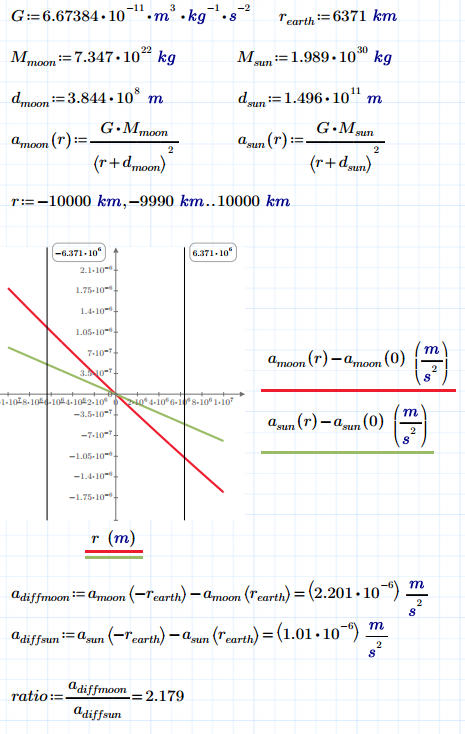You have likely read in books that tides are mainly caused by the Moon. When the Moon is high in the sky, it pulls the water on the Earth upward and a high-tide happens. There is some similar effect causing low-tides. They also say that the Sun does the same as well, but has smaller effect compared to the Moon.
Here's my question: Why is the Moon the major cause of tides? Why not the Sun? The Sun is extremely massive compared to the Moon. One might say, well, the Sun is much farther than the Moon. But I've got a simple answer: Just substitute those numbers in $a=\frac{GM}{d^2}$ and find gravitational acceleration for the Moon and then for the Sun (on Earth, by the way). You'll find something around $3.38$ $10^{-6}$ $g$ for the Moon and $6.05$ $10^{-4}$ $g$ for the Sun - I double checked it to make sure. As you can see, the sun pulls about $180$ times stronger on the Earth. Can anyone explain this? Thanks is advance.

